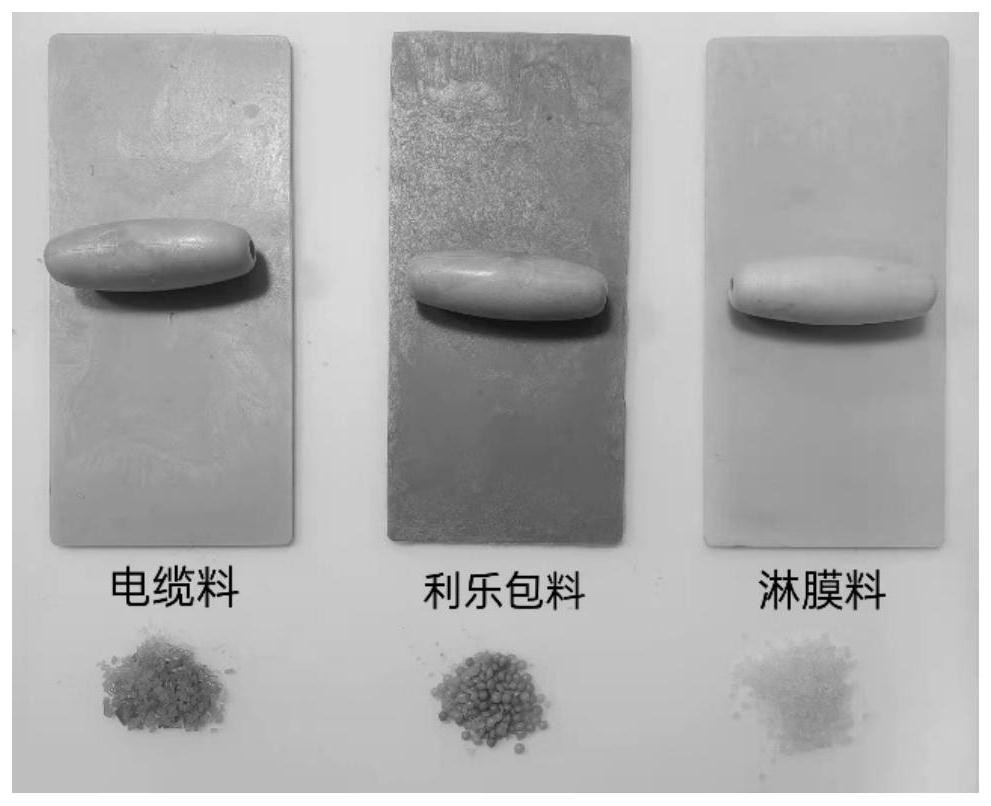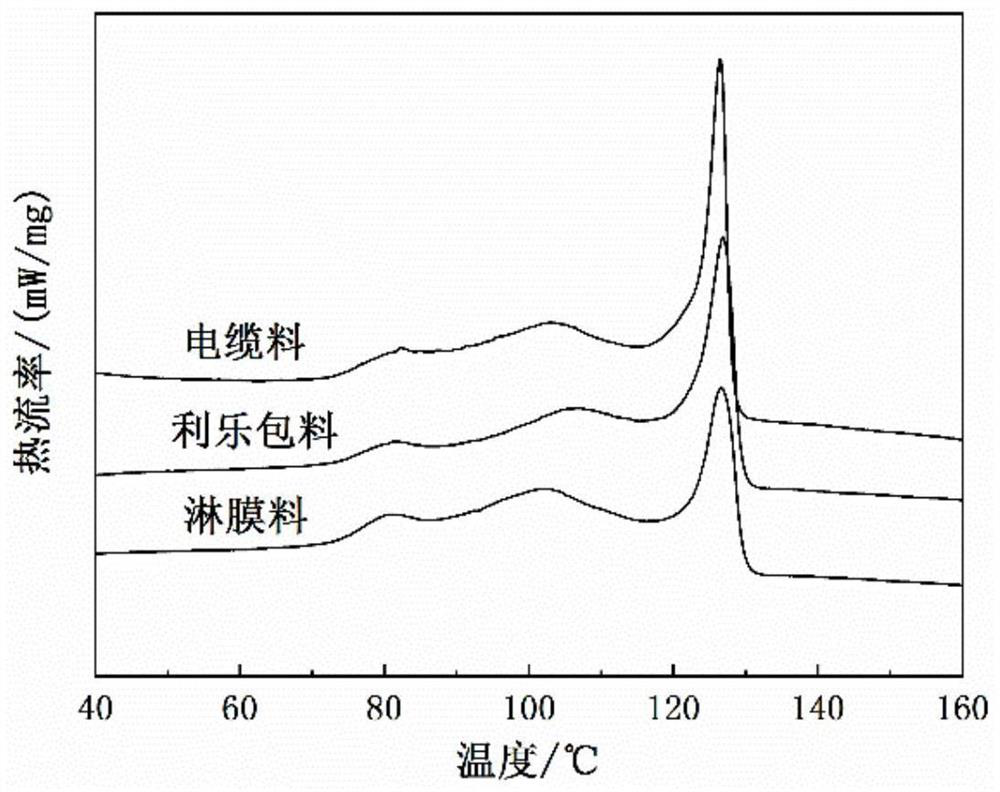Method for preparing foaming product from regenerated polyethylene
A technology for recycled polyethylene and foamed products, applied in the field of polyethylene waste and solid recycling, can solve the problems of low specific gravity of polystyrene, easy to float on the water surface, natural environment damage, etc. high performance effects
- Summary
- Abstract
- Description
- Claims
- Application Information
AI Technical Summary
Problems solved by technology
Method used
Image
Examples
preparation example Construction
[0044] 2. Preparation of cross-linked foamed recycled polyethylene.
[0045]Through the melt flow rate testing machine (ZRZ1452, Meters Industrial Systems Co., Ltd.), the melt index and thermal properties of recycled polyethylene recycled materials were tested according to the standard;
[0046] The regenerated low-density polyethylene with a certain melt index is rolled on an open mill (XL-KLYP3, Dongguan Xilong Electrical Machinery Equipment Co., Ltd.) with a roll temperature of 110°C;
[0047] Adding 5wt% microsphere blowing agent Expancel, 1wt% dicumyl peroxide and 1wt% zinc stearate for mixing;
[0048] After 8 minutes, remove the mixed material, and quickly put the mixed material into a mold of 185×135×6mm while it is hot;
[0049] Then put the mold into a flat vulcanizing machine (XLB-D(Y) 350×350×2, Qingdao Xinhuaqing Rubber Machinery Co., Ltd.), heat and press at 200°C for 10 minutes;
[0050] The mold is opened to take the board out of the mold cavity, cooled and s...
Embodiment 1
[0061] 1. Prepare the recycled polyethylene cable material, and test the melt index and thermal performance.
[0062] Specifically, the melt flow rate test is carried out: according to GB / T 3682-2000, the melt index of recycled polyethylene is measured by a melt flow rate tester (ZRZ1452, Meters Industrial Systems Co., Ltd. Shenzhen Branch), at a temperature of 190°C, 2.16Kg, record the quality of the melt outflow every 30s, extrude 5 times, take the average value as the final extrusion quality, and obtain the melt index after conversion.
[0063] Differential scanning calorimetry (DSC) curves of recycled polyethylene and cross-linked foamed recycled polyethylene cable materials. The process of obtaining the corresponding curve includes: using a differential scanning calorimeter (204F1, Netzsch, Germany), to obtain the melting behavior of the sample under a nitrogen atmosphere, take about 10 mg of the sample, and the nitrogen flow rate is 20 mL min -1 , Heating rate 10℃min -...
Embodiment 2
[0074] 1. Prepare recycled polyethylene Tetra Pak packaging materials, test the melt index and thermal properties, as above.
[0075] The melt index (MI) of recycled polyethylene Tetra Pak is 0.5g / 10min (2.16kg, 190°C), and its main component is low-density polyethylene with a melting point of 106°C, which is low-density polyethylene.
[0076] 2. Prepare cross-linked foamed recycled polyethylene Tetra Pak packaging according to the following method.
[0077] 1) Roll a certain amount of recycled low-density polyethylene Tetra Pak packaging material on an open mill at 110°C;
[0078] 2) adding 5wt% microsphere blowing agent Expancel, 1wt% dicumyl peroxide and 1wt% zinc stearate for mixing;
[0079] 3) After 8 minutes, remove the mixed material, and quickly put the mixed material into the plate mold while it is hot;
[0080] 4) Put the mold into a flat vulcanizing machine, heat and press at 200°C for 10 minutes;
[0081] 5) Open the mold and take the plate out of the mold cavi...
PUM
| Property | Measurement | Unit |
|---|---|---|
| Melt index | aaaaa | aaaaa |
| Melting point | aaaaa | aaaaa |
| Melt index | aaaaa | aaaaa |
Abstract
Description
Claims
Application Information
 Login to view more
Login to view more - R&D Engineer
- R&D Manager
- IP Professional
- Industry Leading Data Capabilities
- Powerful AI technology
- Patent DNA Extraction
Browse by: Latest US Patents, China's latest patents, Technical Efficacy Thesaurus, Application Domain, Technology Topic.
© 2024 PatSnap. All rights reserved.Legal|Privacy policy|Modern Slavery Act Transparency Statement|Sitemap



